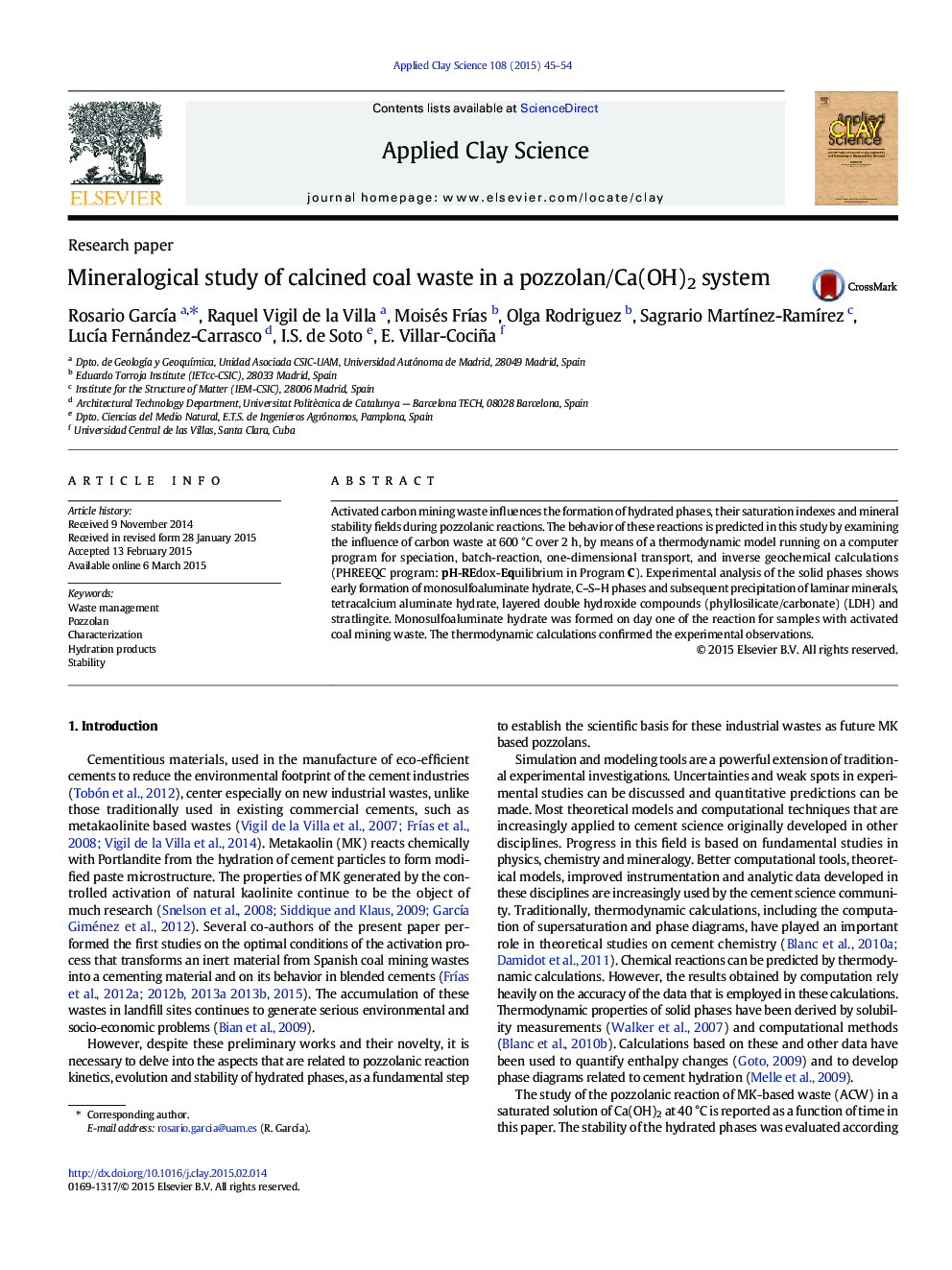| Article ID | Journal | Published Year | Pages | File Type |
|---|---|---|---|---|
| 8046479 | Applied Clay Science | 2015 | 10 Pages |
Abstract
Activated carbon mining waste influences the formation of hydrated phases, their saturation indexes and mineral stability fields during pozzolanic reactions. The behavior of these reactions is predicted in this study by examining the influence of carbon waste at 600 °C over 2 h, by means of a thermodynamic model running on a computer program for speciation, batch-reaction, one-dimensional transport, and inverse geochemical calculations (PHREEQC program: pH-REdox-Equilibrium in Program C). Experimental analysis of the solid phases shows early formation of monosulfoaluminate hydrate, C-S-H phases and subsequent precipitation of laminar minerals, tetracalcium aluminate hydrate, layered double hydroxide compounds (phyllosilicate/carbonate) (LDH) and stratlingite. Monosulfoaluminate hydrate was formed on day one of the reaction for samples with activated coal mining waste. The thermodynamic calculations confirmed the experimental observations.
Related Topics
Physical Sciences and Engineering
Earth and Planetary Sciences
Geochemistry and Petrology
Authors
Rosario GarcÃa, Raquel Vigil de la Villa, Moisés FrÃas, Olga Rodriguez, Sagrario MartÃnez-RamÃrez, LucÃa Fernández-Carrasco, I.S. de Soto, E. Villar-Cociña,
